Driving
Jack Nicklaus: My Best Tips For Driving It Great
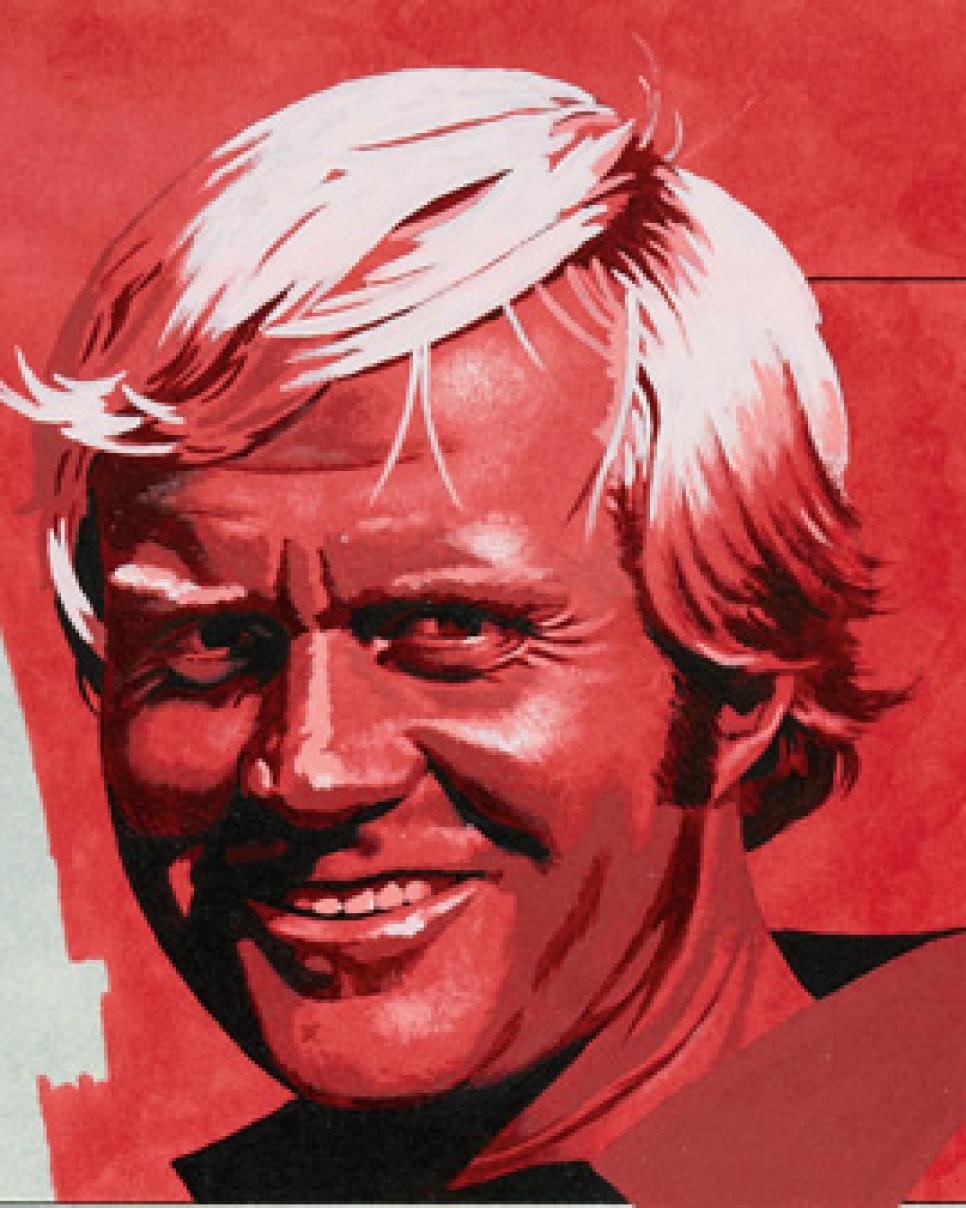
In the series Jack Nicklaus wrote for Golf Digest in the 1970s, he made the point that he was a target driver. He explained then that he tried to hit the ball to a specific part of the fairway, rather than just in the fairway. That tactic still holds today, but Jack's legacy in the game is more as a power player. No one in his prime was more dominant off the tee. As Nicklaus points out, being a great driver is all about having sound fundamentals, playing to your strengths and making smart decisions. Here we look at Jack's driving tips from that classic series and hear what he thinks today.
AIMING: PLAY OFF TROUBLE
I rarely try to hit the ball dead straight with the driver. Having determined exactly where I want the ball to finish, I'll play down the left or right side of the fairway, fading or drawing the ball toward my target. I give myself the entire width of the fairway to play with. If the best spot for the approach is close to a left-side fairway bunker, I make that spot my target, then ensure against hitting into the bunker by fading the ball (below).
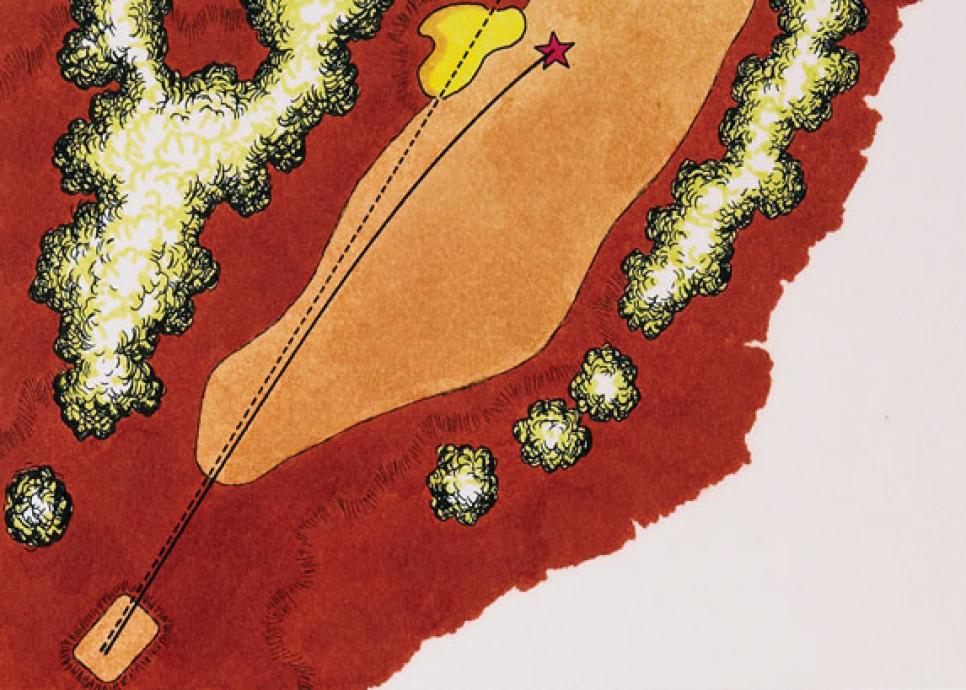
TODAY
I like what I wrote back then. I'm constantly reminded of this idea in my course-design work. The 18th hole at Muirfield Village is an example. There's a creek on the left side and bunkers right, so you need to ask yourself, Is it worse to be in the creek (adding a penalty stroke) or in the bunkers? The smart play is to aim just to the right of the creek and fade it into the fairway with a full and free swing. If you overcook it, about the worst thing that can happen is you'll be in the sand but still have a chance to advance the ball, even hit the green.
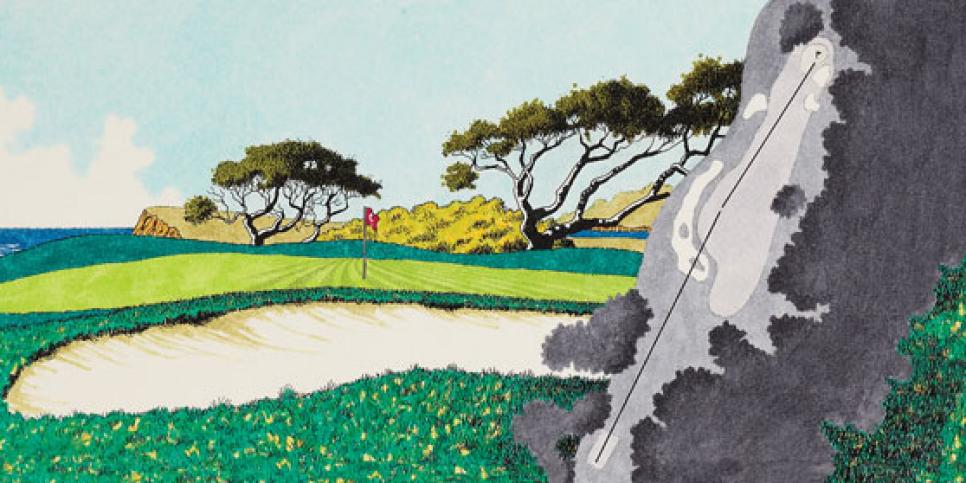
STRATEGY: PICK YOUR SPOTS
The better a golf course is designed, the braver and more skillful you must be to drive the ball to the ideal position. Take the 13th at Pebble Beach (above), which couples a huge left-side fairway bunker with a right-to-left sloping green. The golfer who chickens out and drives it right will find it almost impossible to stop the ball on the green.
TODAY
They've lengthened that hole, but where the players drive it today is about where we used to. Now that we're back to V-grooves in irons, it's important to hit into that green from the left side. So the premise of a well-designed hole remains the same: You can take an aggressive line off the tee and get rewarded, or you can take a conservative line and face a tougher approach shot.
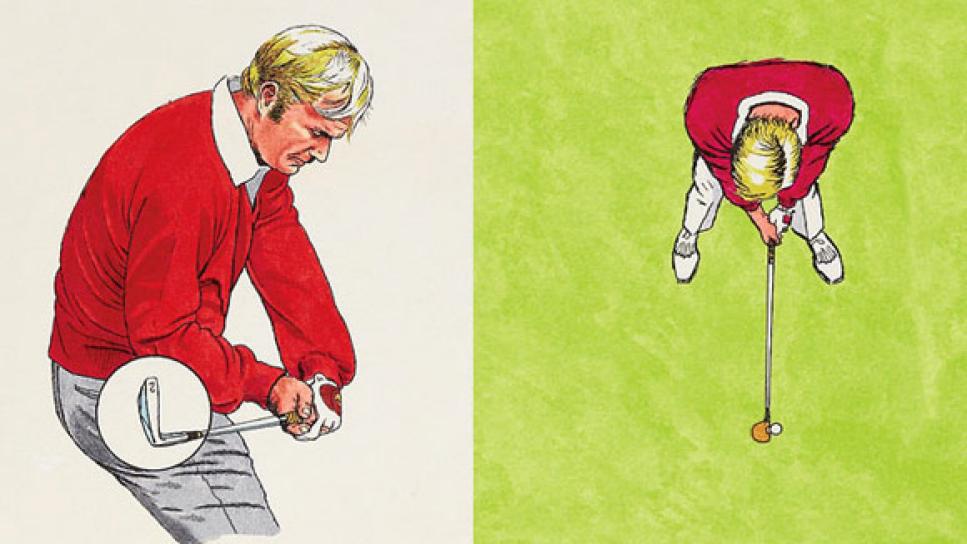
LAYING UP: STAY AGGRESSIVE
When you decide that the percentage shot is hitting less than a full driver, the best strategy is to make a full swing with a 3-wood or long iron (above), not an easy one with a driver. Letting up with a driver almost always leads to quitting on the shot or attempting to steer the ball into position—and the results are equally poor.
TODAY
This principle is true for almost all lay-up shots, not just tee shots. My motto is: Pick a conservative target, then make an aggressive swing to it. You'll make a complete backswing and a freer release through the ball, and that will result in better contact and a straighter shot. You can get in trouble when you don't complete your swing or you hold off your follow-through.
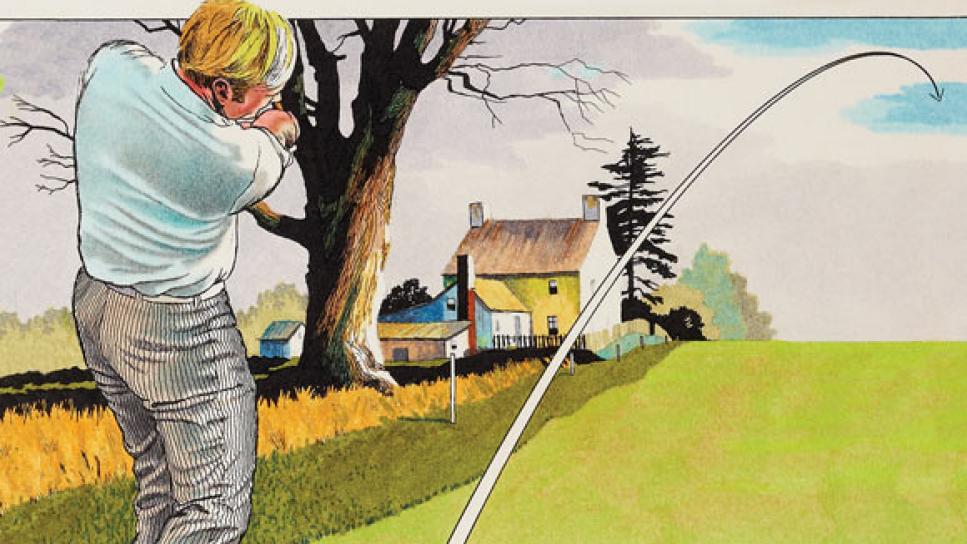
TROUBLE: AVOID ANXIETY
Your natural fear of out-of-bounds areas will lessen considerably if you make a habit of teeing up as close as possible to the trouble area, then curving the shot away from it. For example, if there's a threatening O.B. area to the left, tee up on the left side off the tee box, aim down the left edge of the fairway, and try to fade the shot back to the center (above). Conversely, if there's O.B. down the right side of the hole, tee up as close to the right tee marker as you feel comfortable and play a draw.
TODAY
Because I had difficulty for most of my career drawing the ball, and a draw could get away from me, I often took a different strategy when the trouble was on the right. I typically went with 3-wood off the tee instead of the driver. At Augusta, for example, I usually hit my 3-wood on the dogleg-left holes—especially Nos. 10, 13 and 14—even though there was little trouble on the right. I told my kids from Day 1, "If you're not totally confident you can hit the driver in the fairway, put it back and use your 3-wood. If you're not confident with that, play a 5-wood or even an iron. Keep working down the bag to where you're comfortable with the club and you still can play the hole."

HEADWIND: CHECK TEE HEIGHT
Don't make the mistake of following that old but erroneous golf tenet: "Tee the ball low when driving into the wind." The lower you tee the ball, the more likely you'll be to hit down on it, which creates additional backspin. The more the ball spins, the higher it flies, which makes it more susceptible to being blown off line.
TODAY
When I wrote that tip back in the early '70s, the concept was valid because of the equipment. We played high-spinning balata balls and shallower-face persimmon drivers, like in the illustration at left. If you hit down on a balata ball with one of those old wooden drivers, it would balloon into the wind and you'd lose control. Today, with lower-spinning balls and deep-face drivers, you can tee the ball lower and hit a lower shot. That's great when conditions are firm and fast, which many modern courses are today, and you want to take advantage of the roll.
CROSSWIND: RESPECT THE WIND
There are two schools of thought among tour golfers about how to handle crosswinds. Some prefer a draw into a left-to-right wind and a fade into a right-to-left wind. Others like to go with the wind. My tactics in a crosswind vary depending on its strength and the state of my game, but generally I use the wind rather than try to fight it.
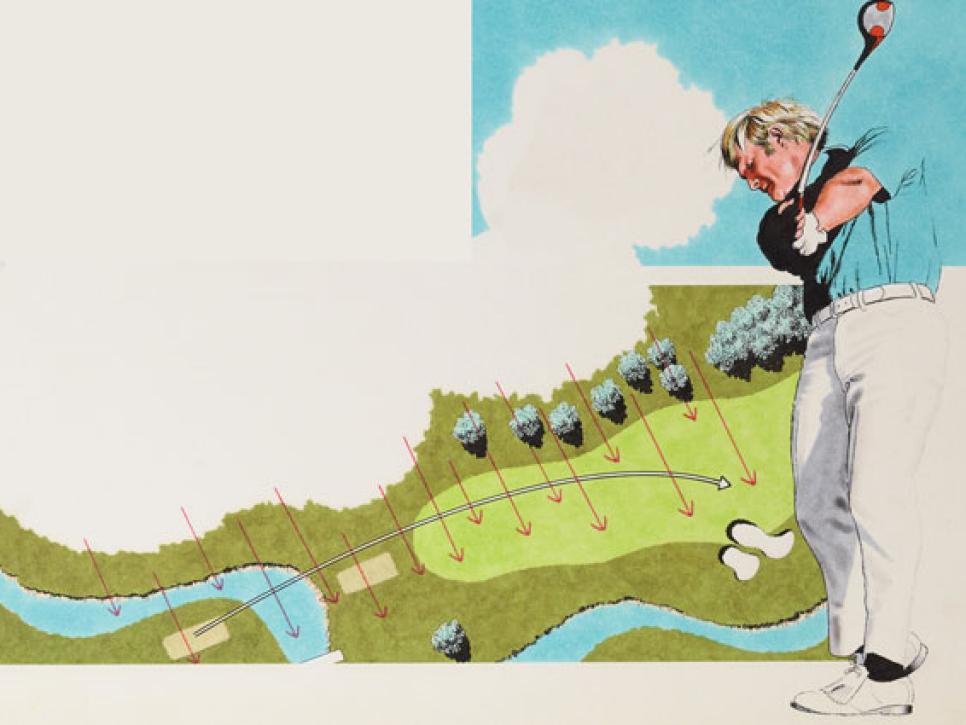
TODAY
Because my go-to shot was a fade, I usually rode a left-to-right wind, aiming down the left side. The hardest shot for me was a hook into a left-to-right wind. Quite often I would hit a 3-wood and let the loft take the ball into the air and drop it down. Sometimes I'd shut the face on the driver, play the ball back and basically trap it. But that was rare. I used that technique only when there was trouble on the left and no carry to worry about, because I'd hit it low and very straight.
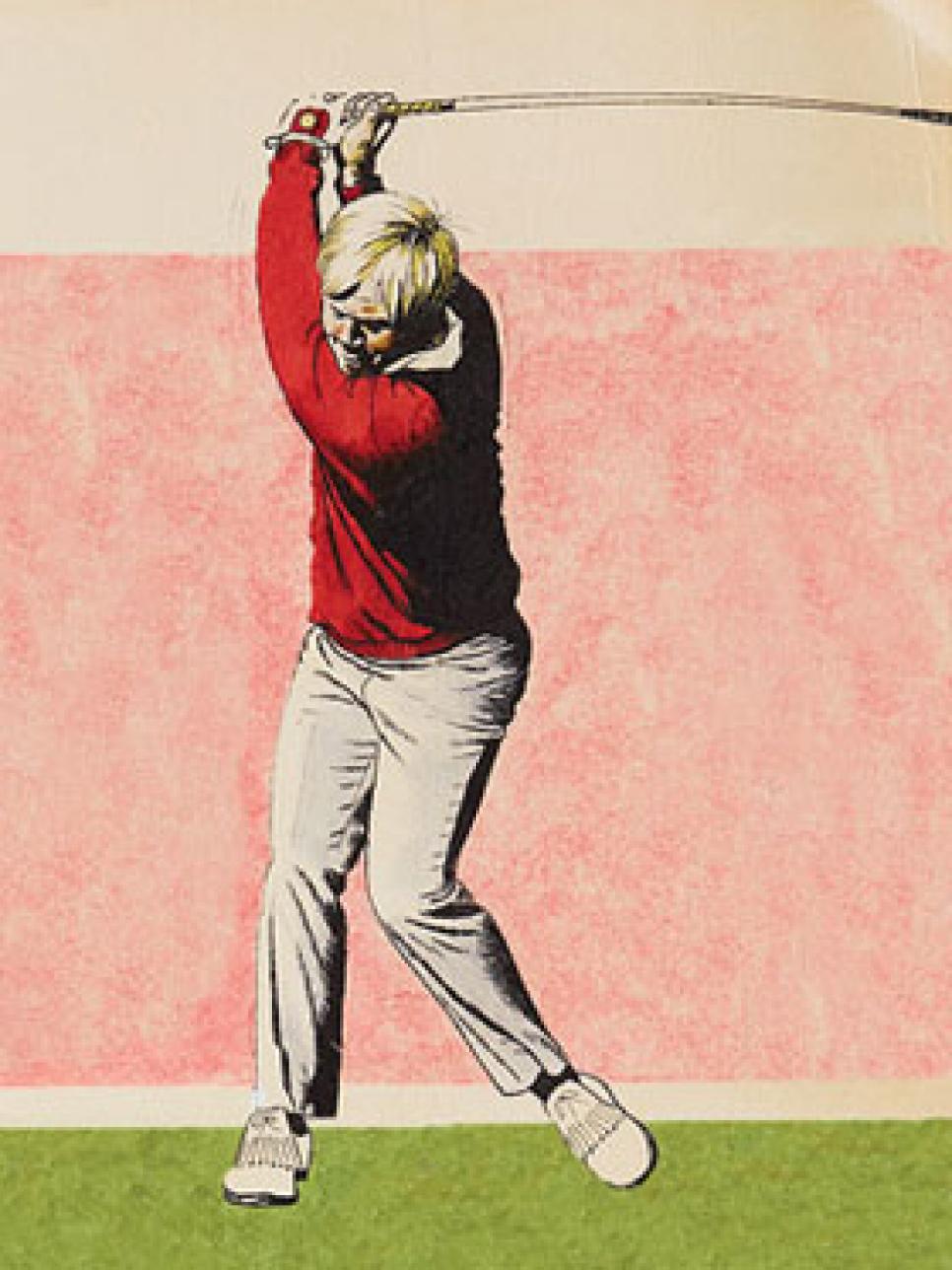
WET WEATHER: DON'T GET QUICK
Rhythm and tempo take on extra importance when you're being bullied by the elements. With rain running down your neck, you risk hurrying your setup and swing. In those circumstances, I make a conscious effort to get properly settled over the ball, then to swing as smoothly and fully as possible. Two of my keys are: "Make a deliberate takeaway" and "Complete the backswing."
TODAY
Boy, that's a great one. Everybody has a few keys they think about. Mine were to not rush, get a good start, and make sure all the elements of my swing had time to happen. I used those all the time, no matter the conditions. But I didn't mind wet weather. You should have the same outlook as Tom Watson, who relishes it. I always felt like there would be Group 1, who wants to stay home; Group 2, who wants to play but is in a bad mood; and Group 3, who has Watson's attitude. I tried to be in Group 3.